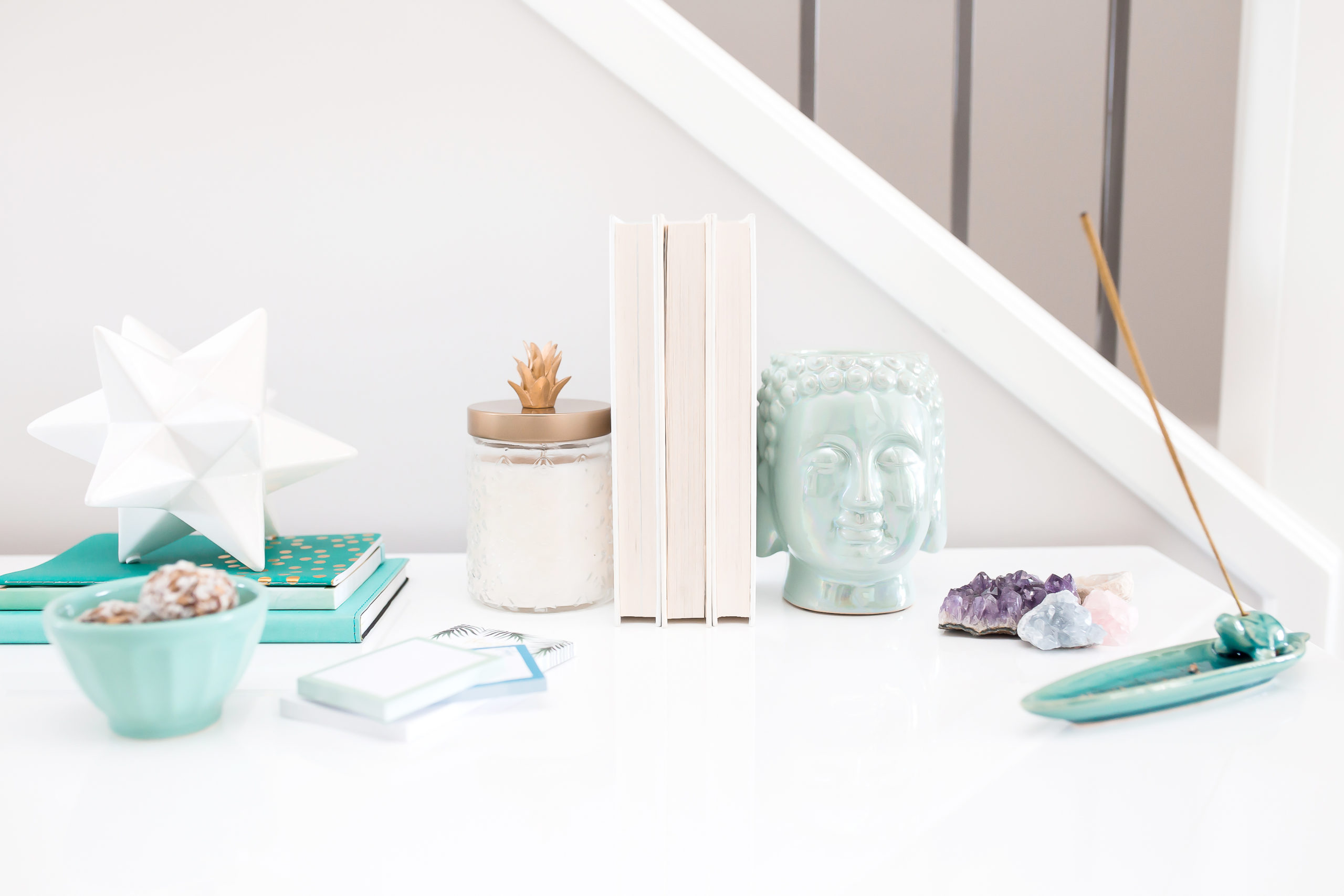The notion of mindfulness and meditation isn’t new. Many well known business leaders, celebrities and sports stars have a daily practice.
From Ray Dalio (who manages the world’s largest hedge fund: Bridgewater) to Arianna Huffington (founder of Thrive Global and the Huffington Post) to Jennifer Aniston, Halle Berry, Oprah and Kobe Bryant. These high-fliers swear by meditation as a path to:
- Moving beyond the mind’s noisy chatter
- Tapping into your own wisdom
- Changing your consciousness
- More beauty
- More energy
- Boosting your mood
- Boosting creativity
- Pulling you out of emotional quicksand
- Staying calm and happy
- Remaining grounded in a crazy world
For many of us think that the idea of meditating sounds great, BUT three major blocks come up:
+ Where do you find the time?
+ How do you get started?
+ Which style of meditation is actually right for you and worth the time?
For the highly self-critical, type-A personalities there’s another challenge…
Taking the time out to meditate and just “be” can feel counterproductive.
So why bother in the first place?

I used to fall into this camp.
In my early twenties I was working a full time job whilst juggling a part time Masters degree in the evenings and weekends.
I was busy. Rushing around. Multitasking. Always on the go. Doing. Achieving. Ticking things off the to-do list. That was my life.
My first taste of that quiet zen-like meditation state was in Savasana (corpse pose) at the end of my first yoga class.
As I committed to my weekly classes, I sometimes skipped out on the final resting pose in order to get to my next appointment.
I would think to myself:
“class is done, I can do away with this resting business – I’ve got more important stuff to do!”
*Forehead slap* I totally missed the point.
Just because I didn’t exert effort and do something hard, didn’t mean that tuning out and resting for 1-2 minutes wasn’t productive.
Slowly but surely, Savasana came to be my favourite pose that I didn’t want to miss for the world.
Those few minutes of lying on the mat were more restful than sleeping in my bed at night. I learned to treasure and love that pose.
After taking those few minutes out I felt more relaxed, could hear my inner voice talking to me and feel into my body and how I was REALLY doing.
It’s these moments of mind-body-soul connection which are the key to finding the space to truly listening to yourself.
It’s in these moments where you stop living on autopilot and really feel, that you begin to discern what working and what needs improving or aligning.
So how do you know what type of meditation is right for you? Especially if you have an A-type personality or are a beginner?
I’ve got 5 tips to help get you started.
Let’s dive in!

Tip #1: Make a decision to commit (or not)
I believe the best way to make the decision around committing to a meditation practice (or not) is to read up on the benefits.
Let’s be real: if you yourself aren’t motivated to commit to a meditation practice then you aren’t going to succeed.
As with any new habit, at the beginning you’ll need a little willpower and motivation to get started before it becomes part of a routine.
To get you started in the first place get educated on whether you want to try out this meditation practice.
Action Step: Read up on the benefits of meditation and decide for yourself if it’s an appealing path to reducing stress and boosting your career. I recommend that you check out these four authors: Rick Hanson, Thich Nhat Hanh, Deepak Chopra and Belinda Davidson to learn more.
Tip #2: Explore and then decide what style of meditation is for you
Let’s have a quick look at the different meditation styles that are out there.
The world of meditation is huge. So below I share more details on the main ones I’ve come across. Some of which I’ve personally tried, others that I haven’t but would be amiss if I didn’t include here.
Please use this summary to guide you on the best place to start for you.
Style 1: Mindfulness Meditation
This is a practice of staying present in the moment rather than being fixated on the past or future.
Practically speaking this is about focusing on your breath, your bodily sensations and witness your thinking mind (rather than identifying with it).
Most meditation practices incorporate mindfulness as it’s important to come back to the body and the present in order to relax.
More specifically, breath work meditation is all about the breath and staying attuned to this process in your body. Zen meditation incorporates mindfulness and gets you to witness your thoughts without judgement or attachment.
Style 2: Transcendental Meditation
This is a more spiritual form of meditation favoured by the likes of Ellen DeGeneres, Jennifer Aniston and Oprah.
The aim of this type of meditation is to transcend or rise about your current state of being. This is achieved by repeating a mantra or series of words during the meditation itself.
Some people decide their mantra with their meditation teacher (who chooses this based on a complex set of factors) or alternatively you can use a mantra for something you’re desiring support around.
For example if you’re feeling particularly anxious about a restructure happening at work you might decide to repeat “I am taken care of everything is realigning to my highest path and purpose.”
I’ve personally never tried this form of meditation myself but people have reported higher awareness and deeper spiritual connection.
You can read more about Transcendental Meditation program ™ on their website over at HERE. Note: I’m not affiliated in any way but want you to have information of the main source in case you want to dive deeper.
Style 3: Movement Meditation
This is my personal favourite!
Rather than sitting still and being quiet. This is a practice of tuning into the body and moving in any which way the body would have you move. It’s a more embodied approach to being present and allows you to feel and stay present with the trail of feeling / thought / sensation that you are experiencing.
You can do this in silence or put on some music and intuitively move to support you in accessing your body more deeply.

Do you want an example of this meditation? If so, leave a comment below. If enough people say yes then I’ll create this for you 😉
Style 4: Body Scan Meditation
This is a focused meditation designed to support you in noticing areas of tension in the body.
During a body scan meditation, you typically start by focusing your attention at one end of your body (the feet) and working your ways upwards.
In that process you will notice any tension and consciously relax each body part to invoke more calm and presence.
This is a great meditation to do when you’re in bed and ready to drift off to sleep. It slowly and steadily relaxes the body and can keep you focused in the present rather than stressing about your day ahead or what went wrong during your day.
If you’re new to meditation, this might be a good one to try.
Style 5: Loving-Kindness Meditation
This meditation is about cultivating a more compassionate and grateful disposition and is especially helpful if you find yourself generally feeling angry, stressed, resentful or annoyed.
Let’s face it, you have every right to feel this way. The world can be stressful. From your daily commute to the latest happenings on the news to high pressure work environments, it can be easy to see the world as a negative place.
The goal of this meditation is to reorient your orientation and access both receive and give loving kindness. This really breaks the cycle of stress.
In most forms of loving-kindness meditation you typically chant a mantra until you feel an attitude of love and openness.
Style 6: Chakra Meditation
We all have 7 core chakras within our body starting from the base of our spine up to the crown of our heads. These chakras are spinning energy disks which, when misaligned, can cause physical or mental symptoms.
A chakra meditation is designed to keep these 7 core chakras more aligned and open, bringing them back into balance in order to restore harmony within the body.
Some practitioners suggest doing this everyday just like you would brush your teeth. This is about getting your body’s energy aligned and humming.
Do you want an example of this meditation? If so, leave a comment below. If enough people say yes then I’ll create this for you too 😉

Style 7: Yoga Meditation
There are so many different types of yoga practices that you can try to incorporate more meditation into your life.
Kundalini yoga is a form of meditation that blends movements with deep breathing and mantras. Most people learn about kundalini yoga from a teacher or do a class but you can also learn the poses and mantras at home.
Yoga nidra is another form of meditation which is guided in nature and supports your mind to relax into a more calm and relaxed state. From this place you can access a gap of nothingness and enter a different state of consciousness.
There you have it! 7 different types of meditation to explore before you discount yourself as “not a meditating type.”
Action Step: Decide what style of meditation you want to practice. If you want me to create more resources on any of the above (particularly the movement meditation and chakra balance meditation) then leave me a comment for me so I know! I want to support you in getting started!
Tip #3: Get clear on your intention for meditating
Getting clear on your goal before you get ready to meditate takes your focus away from the discomfort of sitting and being with your thoughts.
Meditating is the path to achieving your end goal (whether that be figuring out your next career move, asking for a promotion or starting your dream business).
Instead of stressing about having to waste spend time sitting in silence, focus on what it is that you do want.
Action Step: Set an intention before you sit down to meditate. Keep it simple, positive and to the point. You can quietly repeat this phrase to yourself whilst meditating if you wish. For example:
- Everything goes perfectly
- I step into my full potential
- I live out my purpose
- I am clear on my next steps
Tip #4: Make a commitment to meditate for 21 days straight
As with any new habit you’ve got to commit in order to see any results. Make a commitment to meditate everyday for 21 days. If you want to make it longer go for it!
Action Step: Decide how long you are willing to meditate for each day. You can start with as little as 2 or 3 minutes and build up from there. Once you’ve decided on how long you will meditate for each day, schedule and prioritise this time.
***Bonus Tip: Anchor your meditation practice with other activities in your regular routine e.g. right when you wake up, after you brush your teeth, or just before bed. This will make it easier to incorporate with less resistance and you’ll be less likely to forget***

Tip #5: Have fun with your practice and go easy with it.
Reframe your meditation practice as “you” time and an opportunity to boost your brain. Get comfortable. Create a space just for you. Relax. Go easy on yourself. A negative thought may pop into your head. You may feel like you aren’t doing it right. Stick at it and keep going. You can do this!
Action Step: Pick a regular spot to practice and ensure you are wearing comfortable, loose clothing. Smile and have fun with the process, you can do this!
So there you have it 5 meditation tips for A-type personalities.
Here’s a quick recap:
Tip #1: Make a decision to commit (or not)
Tip #2: Explore your options and what style of meditation is right for you
Tip #3: Get clear on your intention for meditating
Tip #4: Make a commitment to meditate for 21 days straight
Tip #5: Have fun with your practice and go easy with it
Before you go, I’d love to hear from you:
+ If you meditate already: What does your practice look like?
+ If you don’t meditate: What’s holding you back from getting started?
+ Do you want examples of a moving meditation or a chakra cleanse meditation?
Leave a comment below. I read every response.
With love,

thanks a lot Siohban